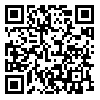Volume 22, Issue 64 (3-2022)
jgs 2022, 22(64): 181-199 |
Back to browse issues page
Download citation:
BibTeX | RIS | EndNote | Medlars | ProCite | Reference Manager | RefWorks
Send citation to:



BibTeX | RIS | EndNote | Medlars | ProCite | Reference Manager | RefWorks
Send citation to:
ARVIN M, ghaneh M, pourahmad A. (2022). Evaluating the utilization of public art capabilities in cultural-led regeneration (Case study: Oudlajan neighborhood). jgs. 22(64), 181-199. doi:10.52547/jgs.22.64.181
URL: http://jgs.khu.ac.ir/article-1-3189-en.html
URL: http://jgs.khu.ac.ir/article-1-3189-en.html
1- PhD in Geography and Urban Planning, University of Tehran, Tehran, Iran, arvinmahmood@yahoo.com , arvinmahmood@yahoo.com
2- Graduate of Urban Design, University of Arts, Tehran, Iran., mahsaghane92@yahoo.com
3- Professor of Geography and Urban Planning, Faculty of Geography, University of Tehran, Tehran, Iran, apoura@ut.ac.ir.
2- Graduate of Urban Design, University of Arts, Tehran, Iran., mahsaghane92@yahoo.com
3- Professor of Geography and Urban Planning, Faculty of Geography, University of Tehran, Tehran, Iran, apoura@ut.ac.ir.
Abstract: (8578 Views)
Considering that today many cities of the country face problems such as problems of distressed urban fabric, in order to solve these problems, various solutions have been presented by experts and theorists, among which one can refer to regeneration. Regeneration has different approaches that have been studied in this research of the re-establishment of the cultural-led. The main objective of this research is to assess the utilization of the capabilities and abilities of public art in two permanent and temporary dimensions and the extent of the impact of public art on socio-cultural, physical and economic aesthetics in order to regeneration the distressed urban fabric of the Oudlajan neighborhood in Tehran. The present research is descriptive-analytical in terms of objective, applied. By studying the related studies of public art indices in two permanent dimensions (furniture, green space and moving plants, mural painting, restoration of the monument, cafes and restaurants, library, statue, element, entrance and bridge design) and temporary (street display, competitions, Exhibitions and festivals, artists' residences, workshops, sound, light and sound, video broadcasting). The statistical population of the questionnaire is the residents of the Oudlajan neighborhood. According to the population of the neighborhood, 16,943 people were selected using the Cochran formula, 384 as the sample size. To analyze the response of citizens, the analysis of structural equations in soft AMOS graphics has been used. The results show that permanent and temporary public art promotes economic development, the development of physical aesthetics and socio-cultural development in the Oudlajan neighborhood, among which permanent and most popular exhibitions are the highest in the cafes and restaurants, and the bridge has the least impact. In the interim animated film, the video playback index has the most impact and the least impact is the soundtrack.
Type of Study: Research |
Subject:
Geography and Urban Planning
Send email to the article author
| Rights and permissions | |
 |
This work is licensed under a Creative Commons Attribution-NonCommercial 4.0 International License. |

This work is licensed under a Creative Commons — Attribution-NonCommercial 4.0 International (CC BY-NC 4.0)





